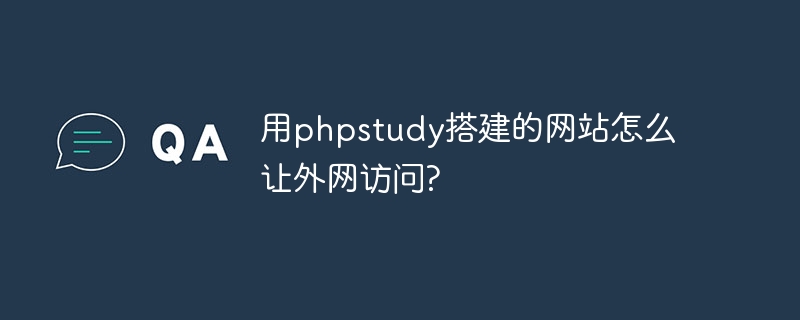Using PHPStudy to build a website that can be accessed from the Internet requires: 1. Configure the domain name and point it to the server's public IP; 2. Set up port forwarding to the PHPStudy server; 3. Install the SSL certificate and configure the web server; 4. Check Firewall settings; 5. Use the registered domain name to access the website.

How to use PHPStudy to build a website for external network access
To make the website built with PHPStudy visible to the external network , the following steps are required:
1. Configure domain name resolution
- Register a domain name (for example, example.com).
- Point the DNS record of the domain name to the public IP address of the PHPStudy server.
2. Set up port forwarding
- #Set up port forwarding on the router and forward port 80 of the external network to port 80 of the PHPStudy server ( HTTP) or port 443 (HTTPS).
3. Install and configure SSL certificate (HTTPS)
- For a secure HTTPS connection, you need to install an SSL certificate and configure the web server (for example Apache or Nginx) to use this certificate.
4. Check the firewall settings
- Make sure port forwarding and SSL connections are allowed through the router firewall.
5. Use a domain name to access the website
- Use a registered domain name (such as http://example.com or https://example. com) to access the website, you can now access it through the external network.
Note:
- The PHPStudy server needs to have a public IP address or obtain it through a dynamic DNS service.
- Router's port forwarding settings may vary depending on the manufacturer.
- SSL certificates are available through the free Let's Encrypt service.
The above is the detailed content of How to make a website built with phpstudy accessible from the outside world?. For more information, please follow other related articles on the PHP Chinese website!






